Rank Species | Genus Mauritia Higher classification Mauritia | |
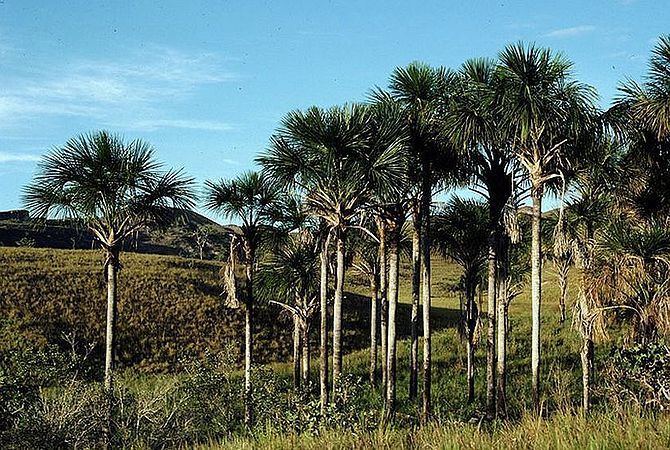 | ||
Similar Mauritia, Palm trees, Cupuaçu, Attalea speciosa, Pequi | ||
Moriche palm aguaje mauritia flexuosa hd stock video footage 1
Mauritia flexuosa, known as the moriche palm, ité palm, ita, buriti, muriti, canangucho (Colombia), or aguaje (Peru), is a palm tree. It grows in and near swamps and other wet areas in tropical South America. It has been reported from Trinidad, Colombia, Venezuela, Guyana, Suriname, French Guiana, Brazil, Ecuador, Peru, and Bolivia.
Contents
- Moriche palm aguaje mauritia flexuosa hd stock video footage 1
- Mauritia flexuosa fruit trade in loreto peru
- Fruit
- Oil
- Ecology
- Miscellaneous
- References
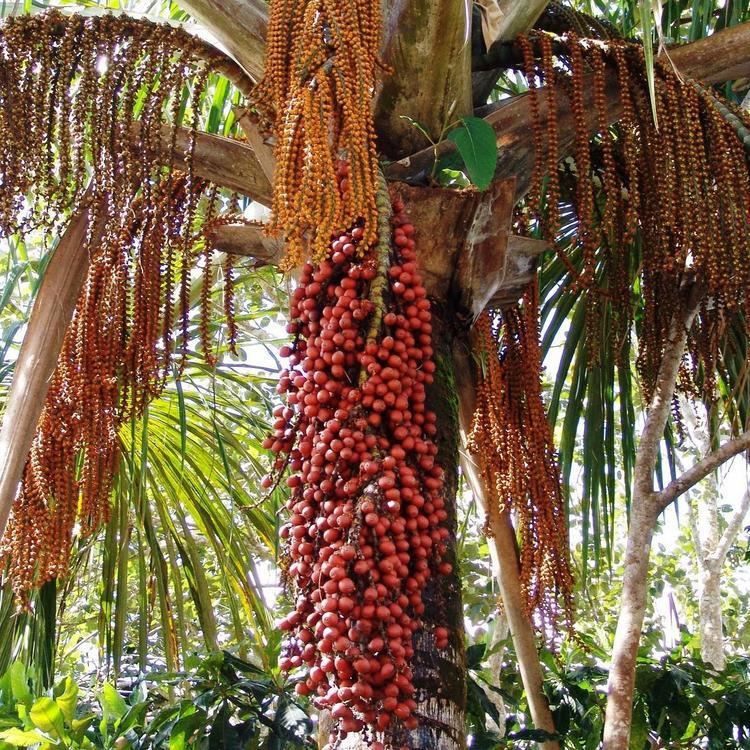
M. flexuosa, a tree, can reach up to 35 m (115 ft) in height. The large leaves form a rounded crown. The flowers are yellowish and appear from December to April. The fruit, which grows from December to June, is a chestnut color and is covered with shiny scales. The yellow flesh covers a hard, oval nut. The seeds float, and this is the means by which the palm tree propagates. In natural populations, the tree reaches very high densities.
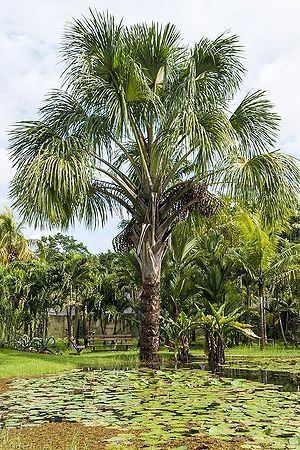
Mauritia flexuosa fruit trade in loreto peru
Fruit

Moriche palm fruit is edible and used to make juice, jam, ice cream, a fermented "wine", desserts and snacks, requiring harvesting of more than 50 tonnes per day in Peru.
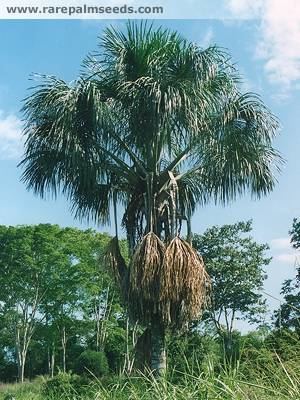
The inflorescence buds are eaten as a vegetable and the sap can be drunk fresh or fermented (see palm wine). Threads and cords are locally produced from the tree's fibers.
Humans consume palm weevils which burrow in the tree trunk.
Oil
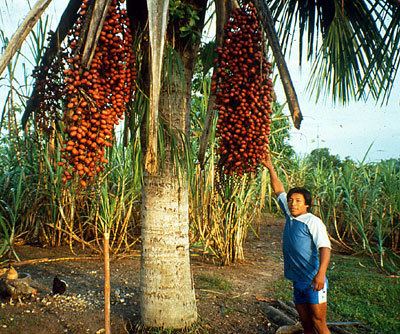
Buriti oil is an orange-reddish oil extracted from the fruit of the moriche palm. The oil contains high concentrations of oleic acid, tocopherols, and carotenoids, especially beta-carotene. The oil has a reddish color used as ink on hides and skins.
Ecology
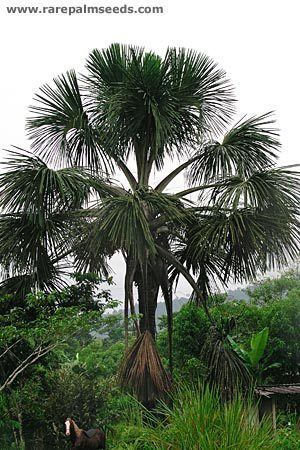
This tree is important to many animal species; several bird species, such as the red-bellied macaw, sulphury flycatcher, and moriche oriole, use it for nesting and food. Tapirs, peccaries, fish and monkeys depend on the fruit.
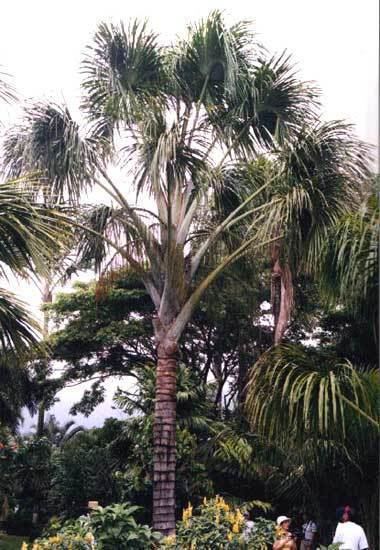
Alexander von Humboldt documented the tree and the ecosystem it supports in 1800 when traveling through the Llanos region of Venezuela. He "observed with astonishment how many things are connected with the existence of a single plant." He called it the "tree of life" and essentially described it as a keystone species although the concept would not be explicitly defined until 1969 by Robert T. Paine.
Miscellaneous
The government of the Federal District - the Brazilian state where the country's capital, Brasília, is located - is called Palácio do Buriti ("Buriti Palace"). Across the street from the building is a square with fountains and a single moriche palm tree, which was taken from the outskirts of the city and replanted there. The species is a common feature of the cerrado vegetation that predominates in central Brazil.
